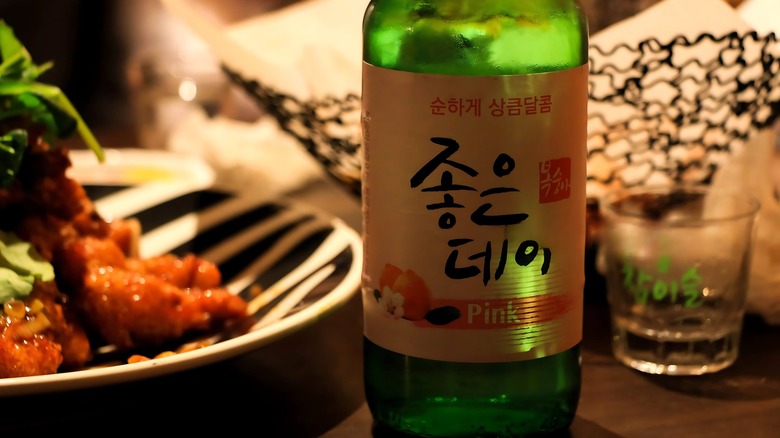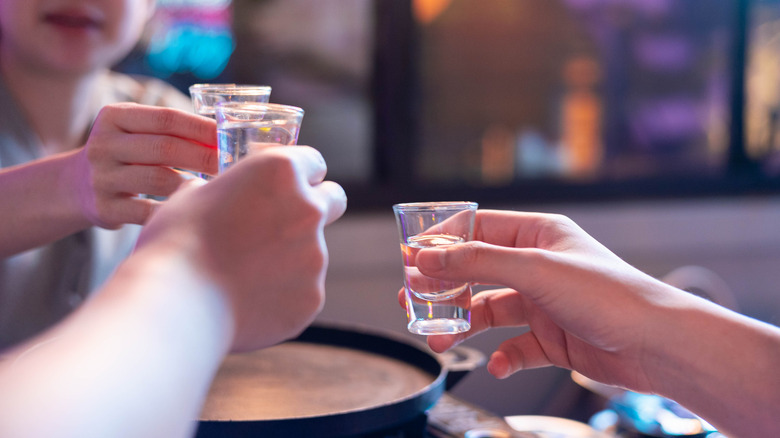What Kind Of Alcohol Is Soju Anyways?
One of the wonders of traveling the world is sampling new cuisines prepared in authentic ways that might be scarce or totally unavailable in your hometown. Just like various countries and regions have their own iconic dishes, they also flaunt their favorite spirits. In South Korea, that's soju — a clear liquor made from distilled grains that goes down smooth with a slightly sweet taste. You might be familiar with an episode of "Parts Unknown" that opens with a painfully hungover Anthony Bourdain trying to piece together the events of the previous evening. Viewers are brought along on his late-night escapades with a group of Korean businessmen as they take shot after shot of a clear liquid poured from a green bottle. The liquid in question is soju, the national drink of South Korea and the most popular spirit in the world (specifically the brand Jinro).
While soju can sometimes be confused with sake, a Japanese liquor, the two spirits are quite different and shouldn't be swapped for one another. Soju has a long and storied history in South Korea that dates back to the 13th century when the Mongols invaded the Korean peninsula and introduced distilling methods they had picked up during their breach of the Middle East. Koreans used these methods to distill various rice and grains, and thus soju was born.
While traditional recipes primarily relied on rice, soju producers had to get creative with other starches when the Korean government banned the use of rice in alcohol in 1965 due to wartime shortages. Barley, tapioca, and even sweet potatoes were successfully put to the distillation test. Even though the rice ban was lifted in 1990, some modern soju brands still use alternative starches.
When and how to enjoy soju
Like any liquor, soju has a little bite to it. However, it's not as intense as a spirit like vodka and can taste mild and sweet depending on the type of starch used to make it. Its alcohol content ranges from a standard 16% to 45% in more premium brands, so it's important to understand the ABV variation before you knock back one too many shots of soju. Some brands even make flavored varieties, with strawberry, peach, and green grape being some of the most popular flavors.
If you want a truly authentic South Korean experience, you should know that there is traditional etiquette to follow when drinking soju. For starters, never pour your own glass. Instead, pouring a shot for someone else is considered good manners, a responsibility often left to the youngest person participating. Out of respect, you also should use both hands when pouring soju or holding a glass while someone else pours for you. The first pour of soju is usually thrown down the hatch as a shot. If desired, any subsequent pours can be sipped since it makes a nice palate cleanser when eating, especially for spicy foods. Note that glasses shouldn't be left empty, so don't drink all your soju if you're not ready for a refill and be vigilant.
Both flavored and unflavored sojus can be used in cocktails. The liquor can be mixed with fruit juices or sodas that aren't too overpowering so you don't totally mask the taste of the soju itself (think watermelon, apple, or lime). No matter if you prefer soju neat or in a mixed drink, this beloved spirit is more than just a beverage — it's a cornerstone of Korean social life and culture. Enjoy it over simple conversation or during popular Korean drinking games.

